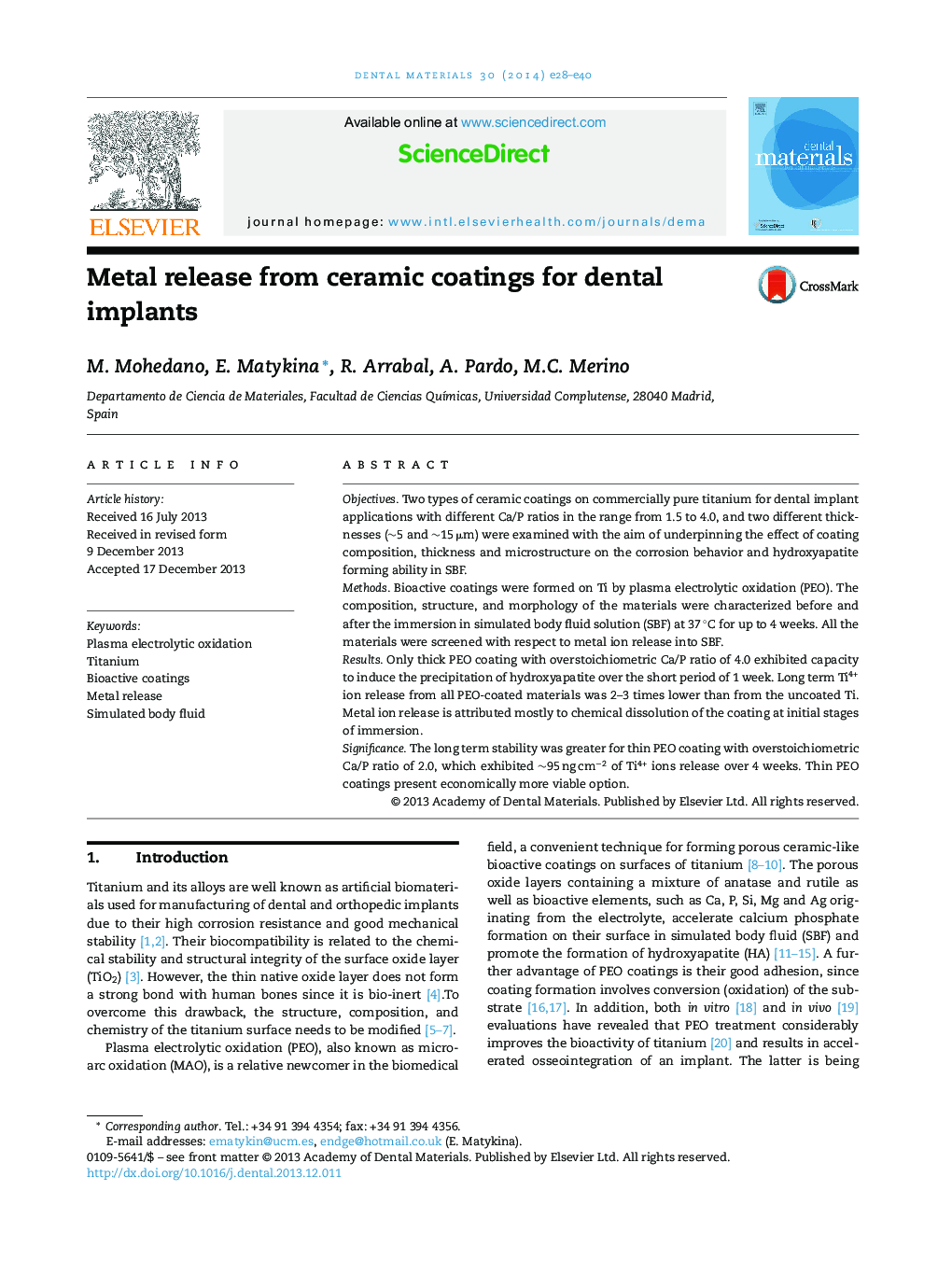| Article ID | Journal | Published Year | Pages | File Type |
|---|---|---|---|---|
| 1421072 | Dental Materials | 2014 | 13 Pages |
ObjectivesTwo types of ceramic coatings on commercially pure titanium for dental implant applications with different Ca/P ratios in the range from 1.5 to 4.0, and two different thicknesses (∼5 and ∼15 μm) were examined with the aim of underpinning the effect of coating composition, thickness and microstructure on the corrosion behavior and hydroxyapatite forming ability in SBF.MethodsBioactive coatings were formed on Ti by plasma electrolytic oxidation (PEO). The composition, structure, and morphology of the materials were characterized before and after the immersion in simulated body fluid solution (SBF) at 37 °C for up to 4 weeks. All the materials were screened with respect to metal ion release into SBF.ResultsOnly thick PEO coating with overstoichiometric Ca/P ratio of 4.0 exhibited capacity to induce the precipitation of hydroxyapatite over the short period of 1 week. Long term Ti4+ ion release from all PEO-coated materials was 2–3 times lower than from the uncoated Ti. Metal ion release is attributed mostly to chemical dissolution of the coating at initial stages of immersion.SignificanceThe long term stability was greater for thin PEO coating with overstoichiometric Ca/P ratio of 2.0, which exhibited ∼95 ng cm−2 of Ti4+ ions release over 4 weeks. Thin PEO coatings present economically more viable option.
